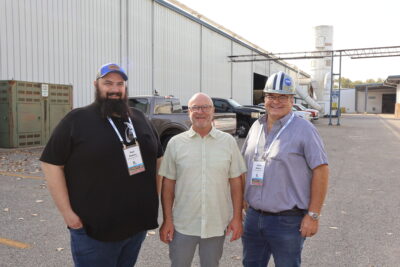Ontario Business Trends 2025 – Less Cross-Border Trading Places Strain On Businesses; Grade And Industrial Lumber Sell At Equal Pace
Over the summer and into early fall, logging conditions improved in certain areas increasing sawmill production. Supplies are reported to be in better shape than a month ago. With the Labor Day weekend, business was slow during this time. The elevated U.S. tariffs continue to cause uncertainty on markets both on domestic and international fronts. We are seeing less cross-border trading due to trade tensions between Canada and the U.S. Also, low economic activity is putting a strain on businesses. Supply and demand for most grade and industrial lumber are almost even. Sales are better for Red Oak, White Hard Maple and Soft Maple. Some lower grades of these species are selling better than the upper grades, noted contacts.
Sawmills in certain areas say they would like more Ash but are competing heavily with log exporters when trying to purchase logs. Kiln-dried No. 1 Common and No. 2A are selling well, primarily to export markets.
Demand for Aspen continues to vary by grade noted contacts. Kiln-dried FAS is drawing interest at good prices. There is sufficient business for No. 1 Common, although markets are not that busy at this time but sellers are generating enough business to keep supplies manageable.
Basswood supplies are noted as historically low. While buyers are demanding less of this species than in the past, sawmills and yards do not have as much supply on hand. Therefore, there is an imbalance between supply and demand for some grades and thicknesses. Prices are staying stable.
As reported, Hard Maple sales were the leaders during the summer. Circumstances have changed somewhat as sales have slowed. There is better business for kiln-dried 4/4 No. 1 Common than for FAS Hard Maple. Sawmills have ample orders for green Hard Maple to cover production.
Market conditions for Soft Maple are less favorable than earlier this summer. Business edged down for most items except 4/4 No. 1 Common and Better, which is moving at a decent pace for both green and kiln-dried markets. Many sawmills are trying to avoid this species as it is not profitable to produce Soft Maple given prices for the common grades and developing brown material.

Birch sales are not strong either as many cabinet, wood component manufacturers and residential flooring producers are purchasing limited volumes or none. With sagging demand, sawmills have been avoiding this species to the extent possible, however markets are more than ample for this species, and prices are showing competitive pressures.
Residential flooring manufacturers are shoring up their supplies of Red Oak in the Appalachian region with green No. 2 and 3A. This is usually not the case, noted sawmill operators. Demand has moderated for green No. 1 Common and Better due to growing price pressure for kiln-dried stocks to Chinese markets. Interest to export markets such as Australia, the UAE and Italy are decent; Chinese buyers show less interest in Red Oak. Demand is fair on domestic markets.
Sales of White Oak depend on lengths. Sellers are having no difficulty generating specific orders with longer lengths. It was noted that there were price differentials between lengths. Demand for Common grades is fair.
Residential and truck trailer flooring manufacturers are controlling their purchases of certain grades of White Oak at this time.
Prime Minister Mark Carney announced the creation of Build Canada Homes (BCH) in early September, a new federal entity that he said will “supercharge housing construction” across the country with an initial capitalization of $13 billion.
Carney made the announcement at a modular housing site in Nepean, Ottawa, alongside Housing Minister Gregor Robertson. The program will be led by Ana Bailão, former deputy mayor of Toronto and candidate in the city’s 2023 mayoral race.
The new agency will focus on building and financing housing that costs no more than 30 percent of pretax household income. The aim is to serve a range of people, from minimum-wage workers and seniors to students and those experiencing homelessness.
The federal government said BCH will prioritize transitional housing, community housing, and multi-unit affordable projects. Detached, single-family homes will not be included.
As a first step, BCH is partnering with Canada Lands Company to develop six sites, including one in Winnipeg, with an initial target of 4,000 factory-built units. The sites are located in Dartmouth, Longueuil, Winnipeg, Edmonton, Ottawa and Toronto. Officials said the projects could be expanded to as many as 45,000 additional units.
Construction is expected to begin in 2026, with the first residents likely moving in years later, a senior government official said during a technical briefing.
Carney argued the approach is necessary to change the way housing is built in Canada. “We need to transform the way we build by harnessing the latest technologies,” he said, noting the government’s preference for modular and mass timber construction methods. “These homes can be standardized, mass-produced, and once completed, shipped to the site and assembled in days or weeks rather than months or years.”
Of the $13 billion allocated, $1.5 billion will go to the Canada Rental Protection Fund to maintain existing affordable rental units, while $1 billion is earmarked for transitional housing for people at risk of homelessness.
Carney also announced a partnership with the Nunavut Housing Corporation to deliver more than 700 affordable units in northern communities, where shortages are most severe.
Conservative Leader Pierre Poilievre dismissed the initiative as unnecessary bureaucracy. He argued there were builders and trades people who were ready to get building.
Government officials said existing affordable housing programs, including those run through the Canada Mortgage and Housing Corporation, will eventually be folded into BCH once current funding ends. “The idea is that, as we go forward and in terms of future looking, this becomes the arm for affordable housing projects,” one official said.
Carney defended the move against critics. “This is not creating another layer, this is creating greater clarity,” he said. He added that 88 federal properties have already been identified as suitable for housing, covering 463 hectares across the country. “That’s the size of downtown Ottawa,” Carney said, adding that more land will be made available as ministers are asked to review holdings in their departments.
“This land will help lower costs for builders and, most importantly, lower the rents and new home prices for Canadian families,” Carney said.
This is good news for the hardwood industry as it could increase business for their goods and services.
On another front, the Canadian Wood Council (CWC) and the Canadian Institute of Steel Construction (CISC) have formed a strategic partnership to accelerate the adoption of steel-timber hybrid structural systems as a viable alternative in modern building designs across Canada.
CWC and CISC have established a joint Technical Steering Committee to oversee the strategic use of funds contributed by both organizations to maximize industry impact. Its primary mandate is to support designers, engineers, and builders by developing technical guidance, best practices, and publications that will enable code-compliant solutions for hybrid systems.
Their shared vision is to deliver innovative, cost-effective, and sustainable building solutions, and address affordability and performance challenges in construction.
More information on the initiative will be shared in the coming months.







